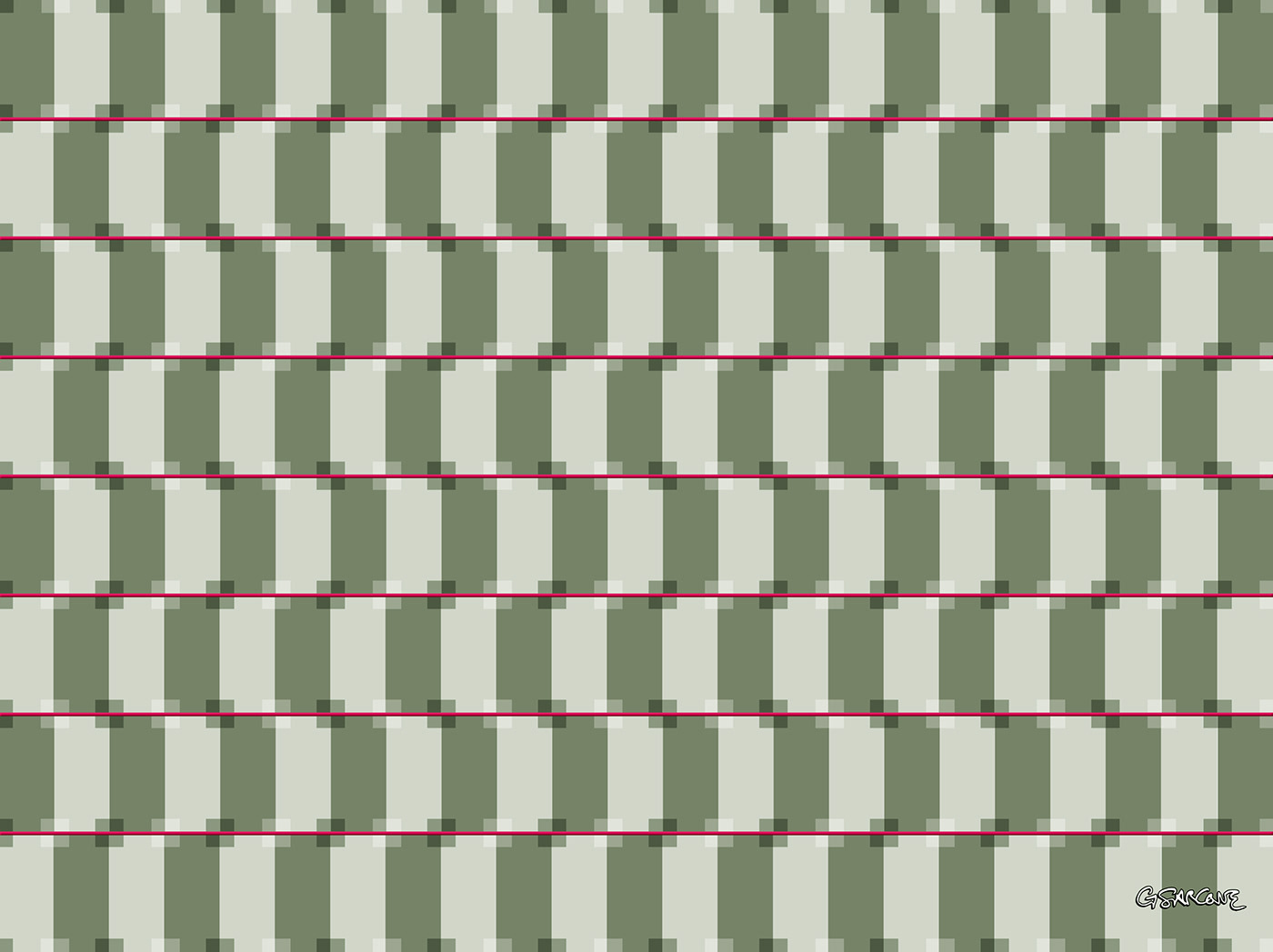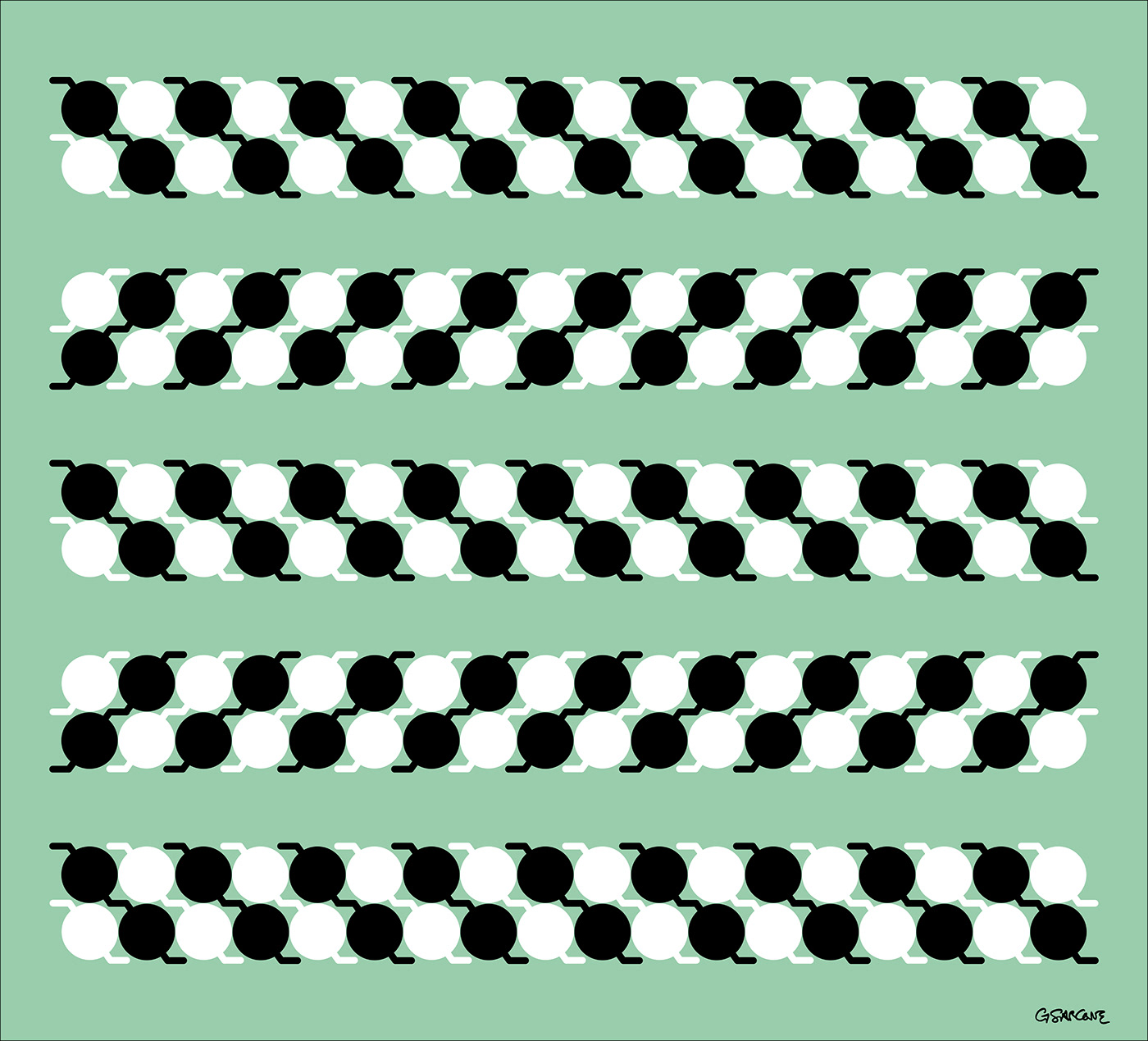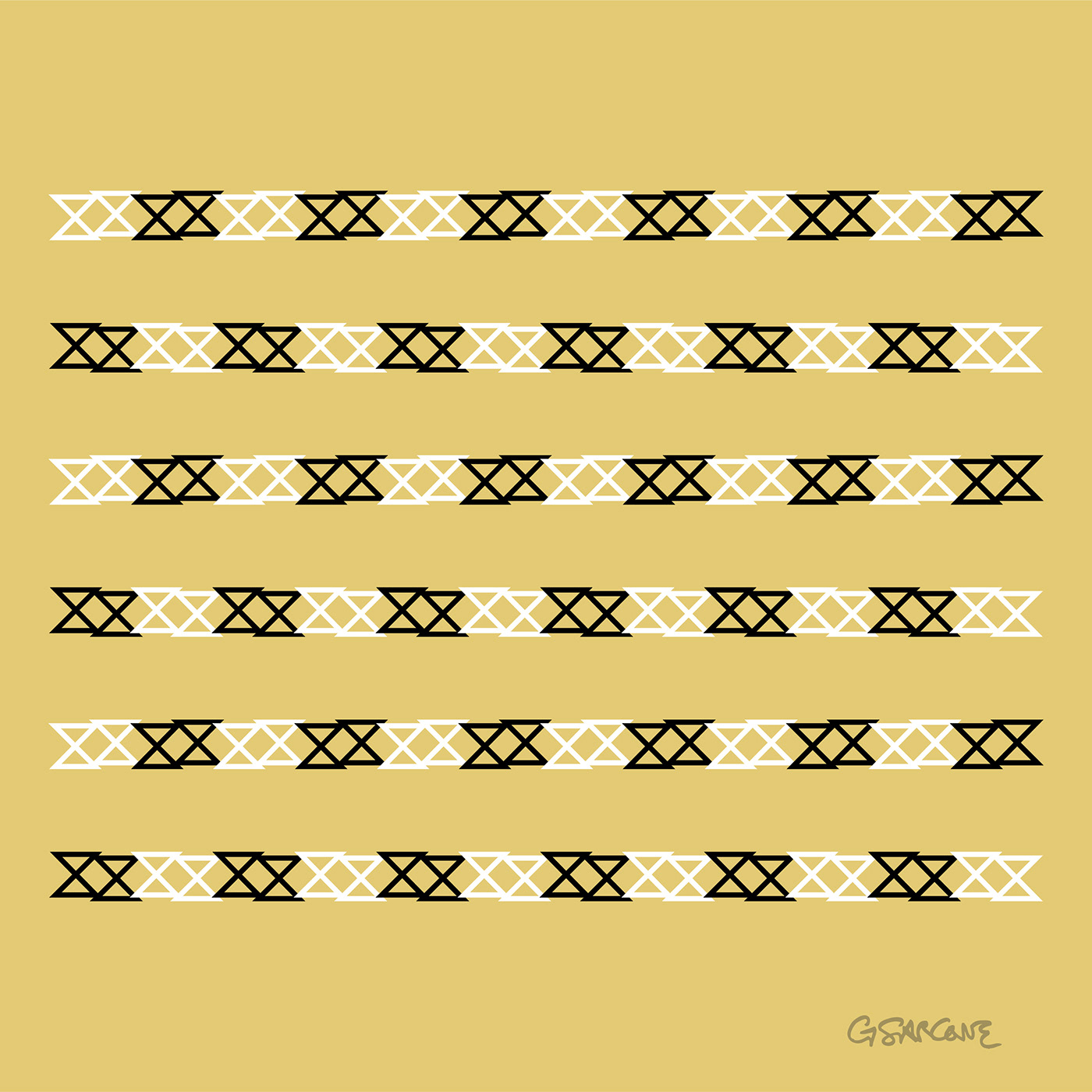Some simple geometric patterns and designs, when repeated, can induce strong illusory shape distortions. Thus, visual misperceptions are quite common in the world of op art.
There is no illusion at first when dark and clear rectangles are arranged in a checkered pattern, as shown below. However, when you overlay transparent dark and clear square patches at the intersections of these rectangles, magic happens.

Transparencies that alternately darken and lighten the intersections of the checkered background can induce visual linear distortions. In this example, the parallel red lines appear to be converging/diverging.

ZigZag, 2003
Available as prints and canvases from my online gallery
We can further the experiment using dark and light circles. In the pattern shown below, each circle is crossed by a diagonal segment of the same color and alternately paired with its counterpart of the opposite color.

Are the horizontal bars containing the circular designs parallel to each other? Yes, they are indeed parallel, and they also create the impression of movement or expansion.

ZigZag (2), 2004
Available as prints and canvases from my online gallery
What if we alternate black and white X-shaped designs, as demonstrated in the example below?

The alignments of the Xs appear slanted, despite being parallel in reality!

ZigZag (3), 2004
Available as prints and canvases from my online gallery
Keep following me because I'll be adding more thrilling discoveries from the world of op art and visual illusions soon! In the meantime, feel free to browse my website.




